Capitola on the north side of Monterey Bay is where I started this Memorial Day three-day weekend. The little town of 10,000 just east of Santa Cruz is filled with small boutique shops, small independent hotels and cottages and quintessential California beach kids running around with surfboards and skateboards.
Yesterday the town looked like a place run by children and teens as a 3-day long holiday weekend looked like everyday fun in the sun beach action for locals.
Some young surfers may continue improving and eventually go on to chase the 25+ feet winter waves of Mavericks, some sixty miles north of Capitola along Highway 1.
Capitola is a small beach town with beach coves, built on two cliffs and separated by Soquel Creek running through the middle of the beach business district.
Besides Highway 1 a couple miles north, there is only one road in town crossing Soquel Creek, adjacent to the beach. Bumper to bumper tourist traffic can be a major headache trying to reach Capitola Beach on a sunny summer weekend.
Soquel Creek, Capitola, California.
Capitola Wharf and beach.
Capitola, Coast Redwoods and the ties that bind
The original Capitola Wharf was built in the 1850s for the purpose of lumber transportation. The Santa Cruz Mountains rising up from the coastline of Capitola and Santa Cruz were filled with ancient Coast Redwoods, Sequoia sempervirens. This tree species grows to be the tallest trees in the world, some reaching over 300 feet. Currently the tallest coast redwood known is 379 feet.
In the 19th century coast redwoods naturally grew only along 500 miles of coastal California from Big Sur in Monterey County to the southern Oregon coast and extended inland some 5 to 50 miles. Many of these trees were 1,500 to 2,000 years old.
More than 95% of the original coast redwood forests were logged between 1850 and 1950.
In the mid-19th century when the gold rush hit California, coast redwoods were a valuable building and construction asset due to long sections of straight grain and the wood’s resistance to decay. One of the primary uses of these trees was to create railroad ties for California’s rapidly growing network of rails.
Railway bridge across Soquel Creek, Capitola. Young coast redwood tree that looks to be about 50 feet tall growing in front of the house next to the bridge.
Saving the remaining redwoods in the Santa Cruz Mountains led to the creation of the Sempervirens Club in 1900, a non-profit environmental preservation group. Big Basin State Park in the Santa Cruz Mountains became the first California State Park in 1902. By 1918 the Save the Redwoods League was founded to raise money to buy remaining ancient redwood forests from lumber companies. The popularity nationwide to save the remaining coastal redwoods of California helped the League grow to one of the largest non-profit organizations in the U.S. for that time.
California’s First Beach Resort
In 1869 Frederick Hihn, owner of the land around Capitola Wharf leased the area to developer Samuel Hall to develop a seaside resort. Hall developed a seaside retreat called Camp Capitola.
Lawn Way, in close proximity to Capitola Beach, is believed to be the site where Samuel Hall set up holiday tents for July 4, 1874.
Historic Lawn Way Cottages from 1911 were restored in 2002. These were cottages originally built from Santa Cruz Mountains old growth redwood. Lawn Way is about 100 yards from the beach.
These photos managed to avoid the eight preteen boys hanging out in the grassy shade off the beach. There was living happening here on Lawn Place with locals hanging out and tanned tourists walking back to their parked cars after hours in the sun.
The sign at Lawn Way states Frederick Hihn owned a 160-room hotel directly east of Lawn Way. I did not see any sign of a big hotel there. I did pass by Capitola Hotel and several other boutique hotels right at the beach in the heart of the small shopping and dining district.
Capitola Hotel by the sea.
Now the 19th century hotel area is likely the same place filled with boutique shops of Capitola.
Capitola boutique.
Capitola reminds me of Carmel-by-the-Sea with hipper shops and a younger, cooler beach loving clientele. There were several businesses with dog water bowls outside.
The Craft Gallery, Capitola, California.
A big difference is Capitola does not allow dogs on the beach, whereas, dogs run freely on Carmel Beach as a historical tradition that is still ongoing. Carmel Beach is not a State Park Beach. Off-leash dogs on the beach is rarely allowed in California until you get a far distance north of San Francisco. Dogs on leashes are allowed at some California beaches.
Soquel Creek Lagoon is created by a manufactured sandbar in Capitola during summer to allow a contiguous beach for walking.
There are no major brand hotels in beach town Capitola by the seaside. Nearly all the restaurants and stores are independent no-name-brand businesses.
Surf N’ Shack, Capitola.
Capitola Beach Business District.
Wharf Road mural, Capitola. The mural shows Monterey Bay looking south. In the distance are Mount Toro (left) with the hills of Monterey and Pacific Grove (right).
Huntington Beach, California may be marketed as Surf City, USA, but it is difficult to pull off quaint in a city of 200,000 residents surrounded by 10 million southern California people desiring day trips to the beach.
Pedestrian walk way at east end of Esplanade Park on Capitola Beach.
Capitola looks like the top contender for California Surf Town with no rival.


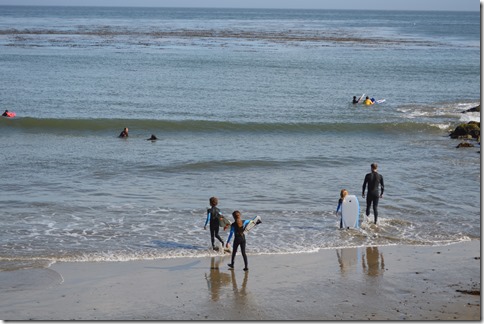
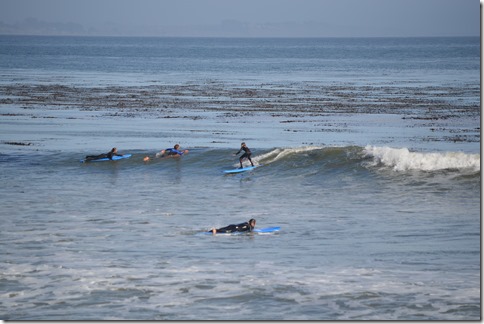
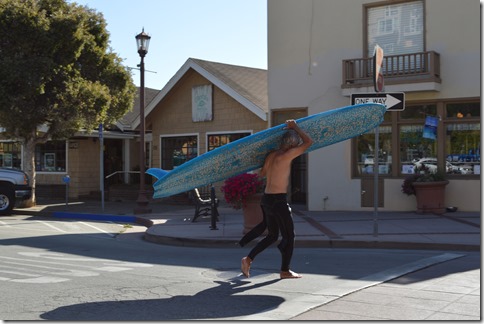
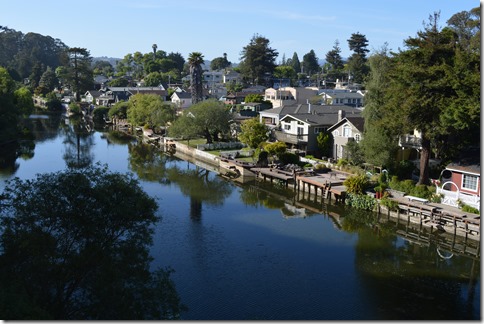
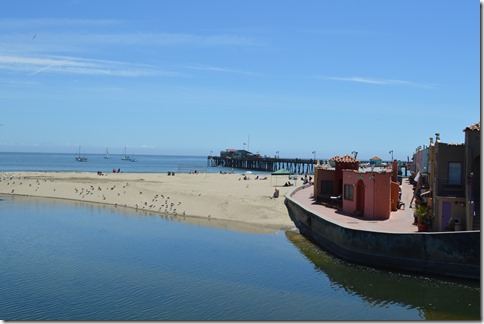
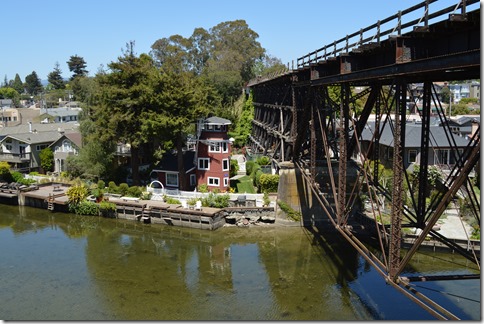
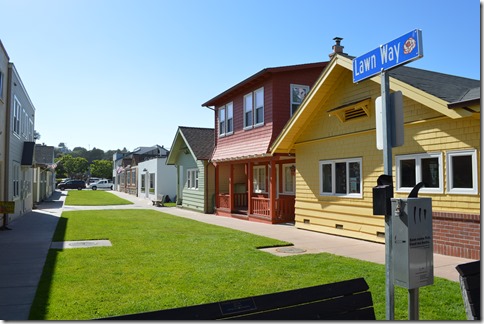
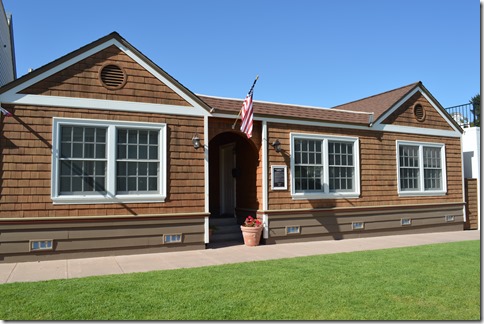
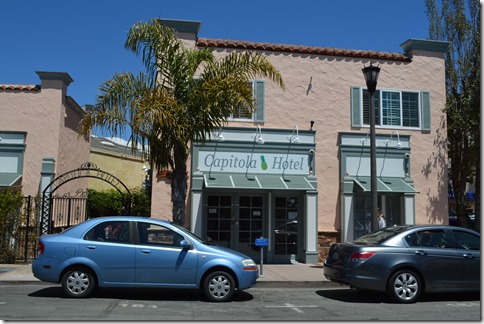
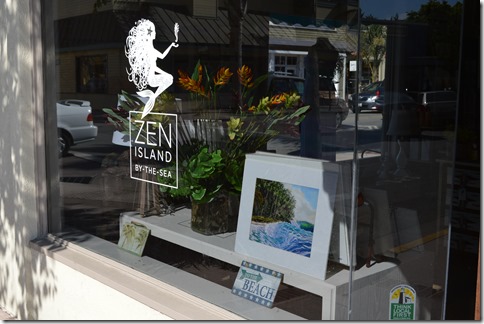
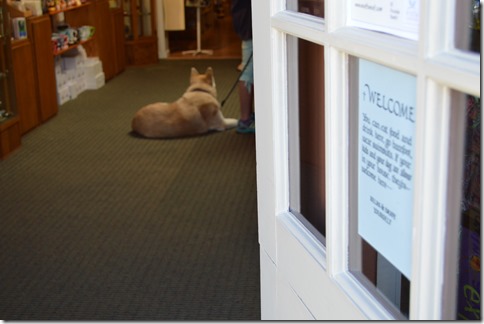
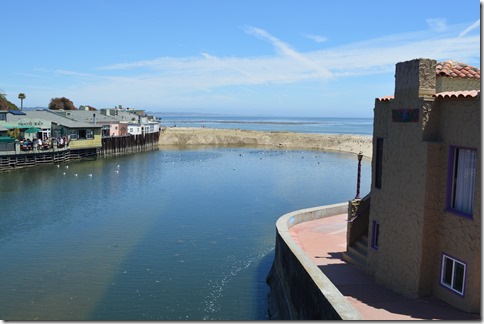
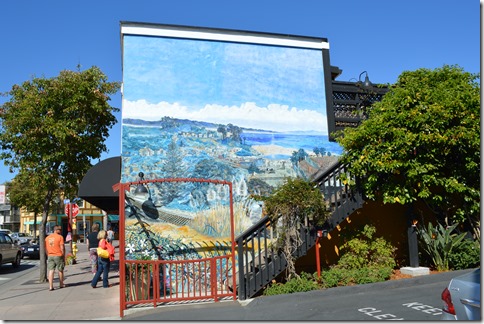
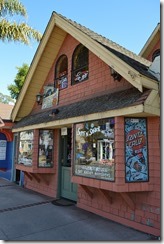
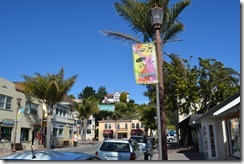
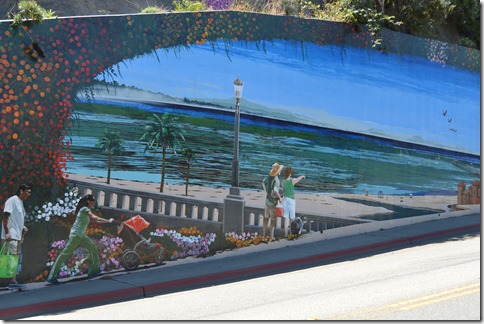
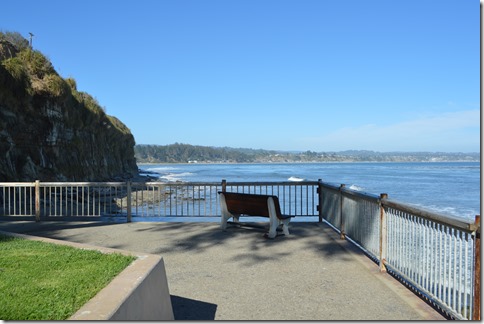
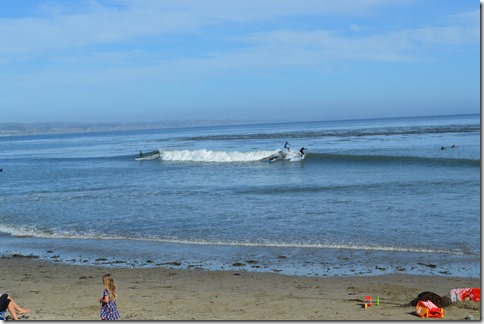

6 Comments
Comments are closed.